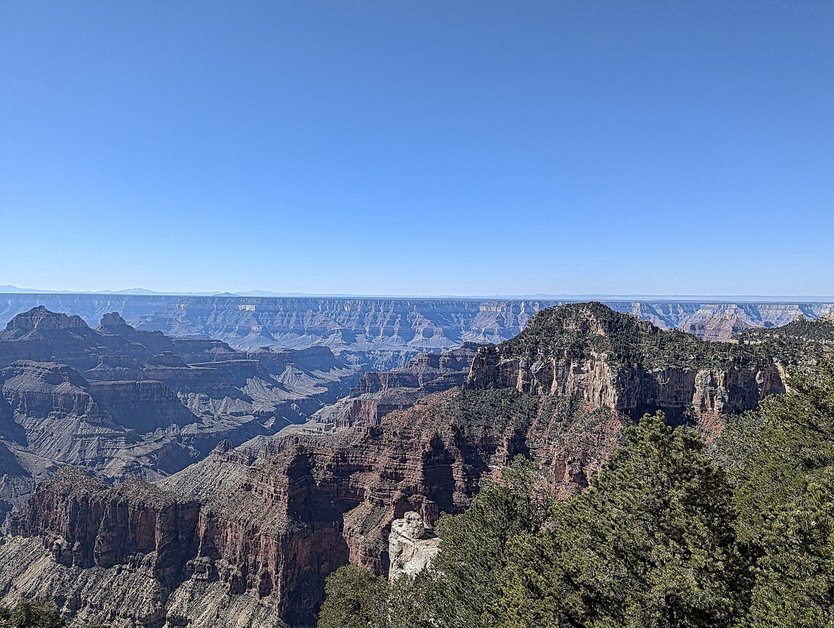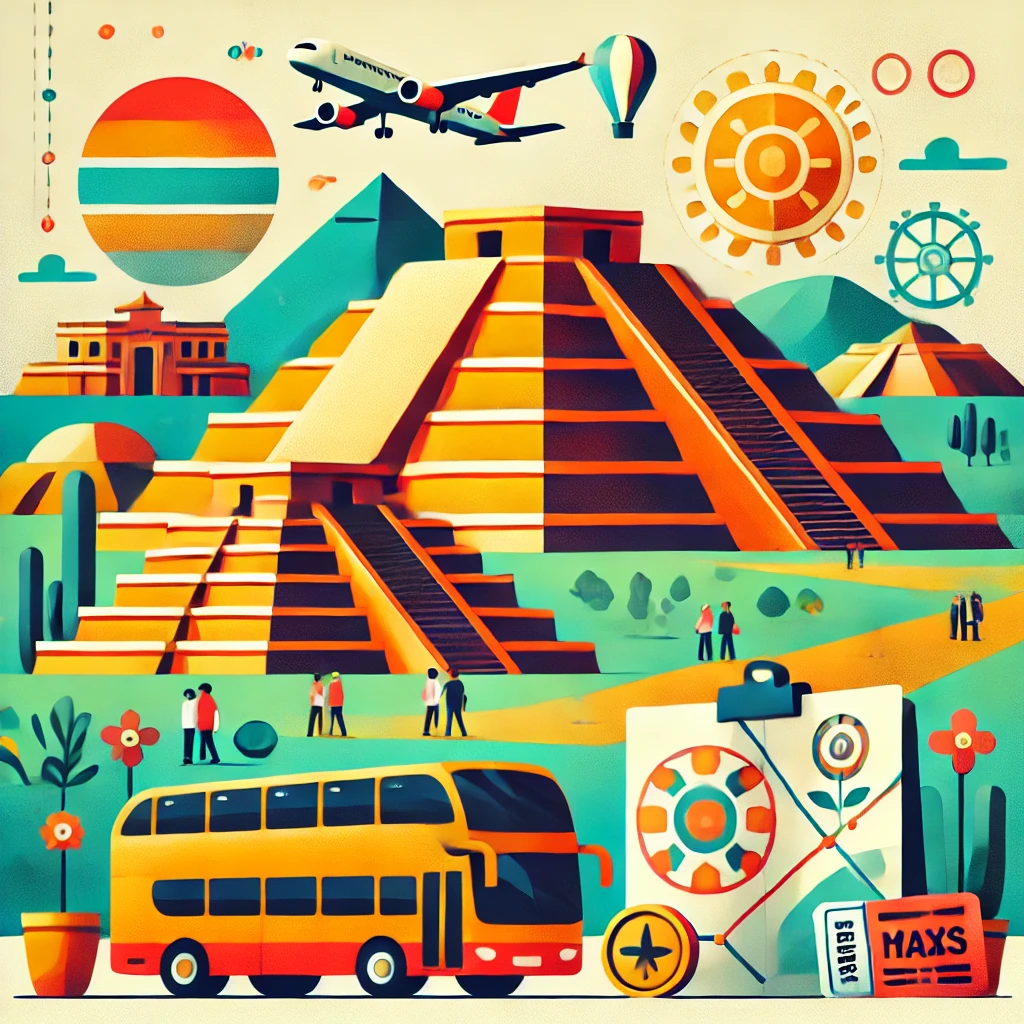It’s said the Grand Canyon can stretch 277 miles in length, reaching depths up to a mile. The sheer magnitude is breathtaking. But once you factor in easy viewpoints, wildlife sightings, and lodging convenience, you might find yourself wondering about North Rim vs South Rim at Grand Canyon national park: Which is Best for you? Matty, Beccy, our toddler, and our ever-curious beagle Sniffy have visited both rims and experienced their quirks. Below is everything we’ve learned to help you pick the perfect side for your own canyon adventure.
Quick Overview of North Rim vs. South Rim
The subtopic: This section outlines the main distinctions between both rims and why you might lean one way over the other.
- Accessibility differences: North Rim is open seasonally; South Rim is open year-round.
- Crowds: North Rim sees fewer visitors; South Rim can get crowded, especially near Mather Point.
- Lodging: The North Rim has limited accommodations; the South Rim offers more choice and price ranges.
- Scenic variety: Both deliver sweeping vistas, but the South Rim is famed for its iconic viewpoints.
Elaboration
The Grand Canyon splits into multiple regions, but travelers typically compare the North Rim and the South Rim. The South Rim attracts over 90% of the park’s annual visitors, partly because it’s easier to reach and stays open throughout the year. In contrast, the North Rim is higher in elevation—by about 1,000 feet—and is accessible only from mid-May to mid-October due to snowfall. This difference in elevation also yields varied climates: the North Rim is cooler and features more woodlands.
If you prefer classic panoramas featuring layered canyon walls, epic sunrises, and straightforward visitor access, the South Rim might meet your needs. Mather Point, near the main visitor center, is an iconic vantage that draws crowds for sunset photos. The South Rim even offers free shuttle buses to help visitors hop between overlooks.
Those seeking quiet should consider heading north. The North Rim has more seclusion—perfect for gazing at the chasm without jostling for railing space. Early risers can soak in near-private sunrise views at Cape Royal or Bright Angel Point. But keep in mind, lodging at the North Rim’s Grand Canyon Lodge is sparse and books up quickly, so you need to plan months in advance.
Because the park is massive, consider reading up on dog-friendly routes too. Our own pup’s experience is detailed in Taking Dogs to Grand Canyon National Park, which helped us figure out where we could safely stroll with our beagle. Being prepared with the right knowledge helps ensure you (and your pooch) have a smooth trip.

Grand Canyon National Park North Rim Grand Canyon Lodge Lookout
North Rim vs South Rim at Grand Canyon national park: Which is Best for you?
A deeper dive into the central question—finding the rim that suits your priorities.
- If you love solitude: The North Rim’s smaller crowds might be your top choice.
- If you need year-round access: The South Rim’s open doors make it more flexible.
- If you’re keen on iconic scenery: The South Rim is home to the vantage points seen on postcards.
- If you value forest landscapes: The North Rim’s dense woodland provides a different charm.
Some travelers prioritize simplicity. The South Rim is straightforward to get to from Phoenix, Flagstaff, or Las Vegas. Roads remain accessible even in winter, though expect some snow. You’ll also have more lodging variety, from rustic cabins to well-known lodges like El Tovar.
But if you show up in peak season hoping to have a scenic lookout all to yourself, it’s not likely. You’ll find crowds at Mather Point or Yavapai Point. If the hustle of a busier environment dampens your mood, the North Rim might offer a serene solution. Even in the high season of June or July, the North Rim sees far fewer visitors, so you can savor the quiet.
Meanwhile, if traveling with kids or a dog, it’s good to know what each rim offers in terms of convenient services. The North Rim’s limited dining and no official shuttle can be an adventure—but you should come prepared with your own snacks and a well-planned schedule. The South Rim, on the other hand, has grocery stores, multiple restaurants, and shuttle routes that can simplify your day.
For more tips on traveling with a furry friend in U.S. national parks, check out Why Does the US National Park Service Hate My Dog and Drone?.

Grand Canyon National Park South Rim View
Getting There and Around
How your travel style might influence which rim is easier and more suitable.
- South Rim main gateways: Phoenix, Flagstaff, or even a day trip from Las Vegas.
- North Rim main gateways: Las Vegas (4.5-hour drive) or St. George Airport (3 hours).
- Road closures and winter conditions: The North Rim is closed mid-October to mid-May.
- Public transport: Available on the South Rim (shuttles, railway), lacking for the North Rim.
The South Rim wins for universal accessibility. If you land at Phoenix Sky Harbor International Airport, you’re roughly 3.5 hours away. From Flagstaff’s smaller airport, it’s just an 80-mile drive. Anyone on a short schedule or craving convenience typically chooses the South Rim. Buses and a scenic railway from Williams, Arizona, further sweeten the deal.
The North Rim is more remote. For many, that isolation is exactly the allure. It’s about 4.5 hours from Las Vegas to the North Rim’s entrance. Roads are paved but see fewer travelers, and they can be closed during winter storms. If your trip date is outside mid-May to mid-October, you won’t even get through because the North Rim shuts down.
Once you’re inside either rim, you’ll see major differences in available transportation. The South Rim’s free shuttle system stands out, taking visitors to well-known viewpoints like Mather Point, Yaki Point, and others. Meanwhile, the North Rim has no official bus routes. You drive yourself, park at trailheads, and wander on foot. This is a plus for those who love a more personal approach, but not so great for folks who want convenience or might have mobility concerns.
Many digital nomads rely on stable phone signals for remote work. The South Rim typically gets better cell coverage near the main village. For alternative data options, see Using an eSIM for Easy Cellular Data Roaming. In remote areas, however, coverage can drop significantly, so plan for potential offline stretches.

Grand Canyon National Park North Rim View Lookout
Atmosphere and Crowd Levels
What to expect in terms of visitor density, plus the overall mood at each rim.
- South Rim vibe: Lively, international crowds, packed parking lots.
- North Rim vibe: Calmer, more peaceful, but fewer amenities.
- Peak times: Summer months fill up fast, especially at the South Rim.
- Visitor season: Year-round at the South Rim; seasonal hush at the North Rim.
If you thrive on meeting fellow explorers or want a broad range of ranger-led programs, the South Rim is your stage. You’ll encounter lines at the entry station, crowds snapping selfies at Mather Point, and a variety of guided tours. Shops and cafes bustle with conversation in multiple languages. For travelers who enjoy the hum of a busy destination, the South Rim might feel like a celebration of global tourism.
On the flip side, stepping onto the North Rim can feel almost contemplative. The quiet is noticeable. You can stroll out to Bright Angel Point at dawn and see only a handful of people. No lines, minimal traffic, and a pace that invites reflection. If you’re traveling with a toddler or beagle, that also means more breathing room—fewer stressed-out tourists bumping your stroller or your dog’s leash.
Still, remember that fewer crowds mean fewer services. Off-peak hours at the North Rim can lead to earlier closing times for dining or gift shops. We once found ourselves at the only open snack bar at sunset, trying to get that last hot chocolate. Meanwhile, the South Rim has multiple restaurants and a grocery store that stay open later.
For a deeper look at how we handle quieter or busier park experiences with our beagle, browse Our Adventure Taking Dogs to Zion National Park, as we faced similar crowd-level contrasts there.

Grand Canyon National Park South Rim Trail at Mather Point
Scenic Highlights and Photo Opportunities
Where to get those “wow” views and the visual differences between the rims.
- North Rim must-sees: Cape Royal, Bright Angel Point, Angels Window.
- South Rim standouts: Mather Point, Desert View Watchtower, Hopi Point.
- Photography tips: Sunrises at the North Rim often highlight the canyon walls; sunsets at the South Rim can be dramatic.
- Lush vs. arid: North Rim’s greener look vs. the South Rim’s iconic layered desert palette.
For many, the South Rim defines what they imagine when they hear “Grand Canyon.” Desert View Drive leads to multiple overlooks, each unveiling unique angles. A sunrise at Mather Point often turns the rocks vibrant hues of orange and red. Additionally, the well-known Desert View Watchtower adds a historic twist to your photos.
Meanwhile, the North Rim’s vantage points offer an entirely different canvas. The forests of ponderosa pine and aspen make it feel almost alpine, especially in early summer. If you head to Cape Royal, you’ll walk a short, easy path to see stunning overlooks with fewer people jostling for a vantage. Angels Window is an incredible natural arch formation that frames the canyon. We found it a quieter alternative for capturing family photos with Sniffy in the background. Think big skies, patchworks of green, and deeper shadows across the canyon floor.
Both rims reward you with mesmerizing photo moments. If you’re an aspiring photographer, note that the bright midday sun can wash out your pictures. Early morning or late afternoon offers softer light. In our experience, the North Rim’s cooler temps also mean more comfortable summer photography sessions.
Check out Using the DJI Mavic Mini 3 Pro in Monument Valley if you’re curious about drone guidelines in scenic areas. (Reminder: Drones aren’t allowed in most national parks, including the Grand Canyon, but reading others’ experiences in broader regions can be helpful.)

Sniffy the Beagle at Walhalla Overlook, Grand Canyon National Park North Rim
Wildlife and Eco-Differences
Contrasts in flora and fauna, plus educational programs on geology and park ecology.
- South Rim wildlife: Elk, mule deer, and California condors—though crowds can reduce sightings.
- North Rim wildlife: Bison, Kaibab squirrels, mountain lions—less traffic fosters more animal encounters.
- Flora: North Rim’s cool pine forests vs. South Rim’s desert pines and juniper.
- Park rangers and museums: South Rim has more geological exhibits and daily ranger talks.
When it comes to wildlife, our family saw more animals in the North Rim region. Several bison herds roam the Kaibab Plateau, and you might spot them crossing the main road early in the morning. The North Rim’s higher elevation also invites deer and Kaibab squirrels—fuzzy-tailed creatures you won’t forget. However, this region’s remoteness means fewer guided experiences. Visitor centers are simpler, focusing mostly on basic park info and a small gift shop.
The South Rim is bustling with interpretive opportunities. The Yavapai Geology Museum displays how the canyon formed over millennia. Ranger-led talks, especially near the main visitor center, can fascinate kids learning about rock layers. California condors frequently soar overhead, and you might catch a glimpse near overlooks or perched along cliff edges. Just be mindful not to feed or approach wildlife. Elk sightings happen often around Mather Campground, especially at dusk or dawn.
If you want further reading on wildlife in other scenic parks, we have a post on Discovering the Mammals of Yellowstone National Park: A Wildlife Wonderland that echoes how we approach spotting animals responsibly.

Elk grazing at Mather Campground in Grand Canyon National Park South Rim
Amenities, Lodging, and Overall Comfort
Comparing each rim’s range of services—restaurants, lodges, campgrounds, and shuttle services.
- South Rim lodging: Multiple lodges (El Tovar, Thunderbird), campgrounds, and hotels in Tusayan.
- North Rim lodging: Grand Canyon Lodge is the primary option; limited cabins and camping.
- Dining: South Rim has everything from pizza pubs to fine dining; North Rim has a simpler selection.
- Transportation and parking: South Rim runs shuttles; the North Rim relies on personal vehicles.
If you dislike planning months ahead, the South Rim is more forgiving. While peak seasons still see fully booked hotels, you have more fallback options in nearby Tusayan or even Williams, Arizona. The on-site campgrounds are large and often have flush toilets, hot showers, and laundry facilities. For daily convenience, hop on the free shuttle buses that loop through the major viewpoints. We found it especially helpful when traveling with a toddler—less stress about parking means more time to enjoy the scenery.
The North Rim, conversely, is minimalistic. Grand Canyon Lodge and its cabins frequently sell out quickly, and alternative lodging is hours away. That can be a plus if you seek a single, peaceful base for exploring. Dining is also limited to the lodge restaurant and a small deli. But that slower pace also means you won’t wait in line for a dinner table for an hour.
When the day ends, the North Rim goes quiet. You can gaze at a sky peppered with stars, unimpeded by the glow of city lights. On the South Rim, you might catch an evening program at the amphitheater or stroll the lit paths near Grand Canyon Village. Both can be magical in their own right, but the difference in ambiance is palpable.
For those traveling with a trailer or RV, you might glean extra tips from Dealing with a Mouse in Your Travel Trailer if you plan to camp out. Keeping your gear rodent-proof can be essential, especially in forested areas.

Angels Window near the Grand Canyon Lodge area, North Rim
Seasonal Conditions, Weather, and Final Decision
Understanding how seasons affect your choice—and concluding which rim might match your style.
- South Rim climate: Open year-round, can be hot in summer and snowy in winter.
- North Rim climate: Colder temperatures, open mid-May to mid-October, scenic fall foliage.
- Decision pointers: Weigh your travel dates, tolerance for crowds, and desired scenery.
- Extra tips: Bring layered clothing, plan well for road conditions, and book lodging early.
Summer is peak season across both rims. The South Rim often reaches scorching temperatures, though nights can be cool. The North Rim remains about 10 degrees cooler, making for more pleasant mid-day hikes (or short walks if you’re not big into hiking). In the fall, aspen trees on the North Rim turn golden, contrasting sharply with the canyon’s reds and oranges. Meanwhile, the South Rim in winter can see snow-dusted vistas, offering an entirely different perspective—plus fewer crowds.
If you have your heart set on seeing dramatic sunsets but want fewer people, consider a spring or late-fall visit to the North Rim. In these shoulder seasons, you might catch the lodge just before it closes in mid-October or right when it reopens in mid-May. The crisp air and scattered patches of snow on the rim trails are pure magic. But do watch weather reports: early storms can close roads unpredictably.
Ultimately, if convenience, iconic viewpoints, and variety of lodging top your list, the South Rim is a solid pick. For those craving solitude and cooler climates, the North Rim can fulfill a more contemplative canyon experience. In our family’s case, we loved them both. On one hand, the toddler and dog had easy services on the South Rim. On the other, the North Rim delivered an unforgettable calm we seldom find at popular national parks.
If you’re looking for more on big geological sites in the southwestern US, see Our Visit to Nevada’s Valley of Fire State Park. Exploring a variety of desert landscapes can round out your Canyon experience.

Sunset at Mather Point, Grand Canyon National Park South Rim
FAQ
Q1: Is the North Rim open all year?
A: No. The North Rim is only open from mid-May to mid-October. Heavy snowfall forces seasonal closures.
Q2: Which rim offers the best sunrise views?
A: Both can be spectacular, but many travelers favor the North Rim for solitude and the cooler, crisper early light. The South Rim’s Mather Point also draws sunrise crowds for iconic photos.
Q3: Where is it easier to find lodging last-minute?
A: The South Rim. There are more hotels inside the park and in nearby Tusayan. The North Rim has fewer options and often fills quickly.
Q4: Can I bring my dog to either rim?
A: Yes, but restrictions apply. Dogs are allowed on certain paved trails and in designated campgrounds, especially at the South Rim. Always check official guidelines or read Taking Dogs to Grand Canyon National Park for details.
Q5: Are there guided tours that don’t involve a strenuous hike?
A: Absolutely. The South Rim features bus tours, helicopter tours, and smooth rim walks. The North Rim has scenic drives, short viewpoint walks, and ranger programs (in peak season).
Q6: If I only have one day, which rim should I visit?
A: For convenience and variety, the South Rim is better. You’ll hit famous viewpoints quickly and access services more readily.
Take all these factors into account—timing, accessibility, atmosphere, and personal preference—to figure out which rim of the Grand Canyon is best for you. Whether you opt for the lively South Rim or the peaceful North Rim, the canyon’s vast beauty remains unforgettable. Enjoy your visit, and if you have a beagle or a toddler in tow—like us—embrace the journey as part of the adventure!
Discover more from Kango Anywhere
Subscribe to get the latest posts sent to your email.




